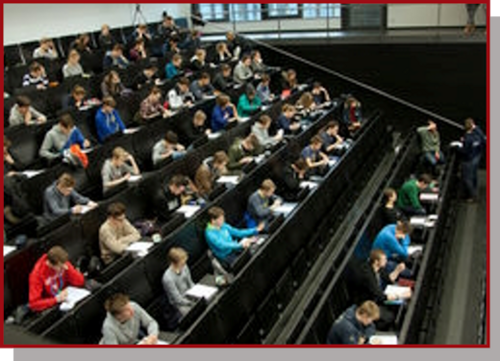Prof. Dr. Sebastian Fernandez Alberti
Universidad Nacional de Quilmes, Argentina
will speak on the topic
Vibrational funnels, multiple pathways, and coherences during energy transfer of organic chromophores - online
Abstract:
Photoinduced processes of multichromophoric organic conjugated materials frequently involve concerted dynamics of coupled electronic and vibrational degrees of freedom (i.e. vibronic couplings) that can give rise to multiple relaxation pathways, and persisting phase relations or
coherences. Fundamental insights into the coherence creation and destruction mechanisms can potentially allow the manipulation of photoexcited non-radiative pathways to achieve desired efficient transfer of energy and charges. Atomistic Non-Adiabatic Excited-State Molecular
Dynamics (NEXMD) using quantum/classical methods, like surface hopping (SH), Ehrenfest, and Multiconfigurational Ehrenfest and Ab Initio Multiple Cloning (AIMC) approaches have proved to be suitable for the analysis of exciton redistributions and vibronic dynamics during electronic relaxation in this class of molecular systems [1]. Particularly, AIMC results a controllable approximation to non-adiabatic dynamics that naturally includes electronic decoherence. Their modeling results can be used to predict nonlinear UV-visible and X-ray signals that track excited state dynamics and its coherent behavior. Vibrational funnels may support persistent coherences. The ultimate confirmation of their role on the inter-chromophoric energy transfer can be achieved by performing nonadiabatic excited state molecular dynamics simulations by selectively freezing the nuclear motions in question. This results a useful tool to identify and evaluate the impact of these vibrational funnels on the energy transfer processes and guide in silico design of materials with tunable properties and enhanced functionalities. Herein, NEXMD simulations have been applied to different organic chromophores to illustrate different aspects of their photoinduced energy relaxation and redistribution.
References
[1]"Non-adiabatic Excited State Molecular Dynamics: theory and applications for modeling photophysics in extended molecular materia" T. Nelson, A. White, J. Bjorgaard, A. Sifain, Y. Zhang, B. Nebgen, S. Fernandez-Alberti, D. Mozyrsky, A. Roitberg, and S. Tretiak, Chem. Rev., 120, 4, 2215-2287 (2020).
Interested parties are cordially invited
Professor Dr. Kühn

